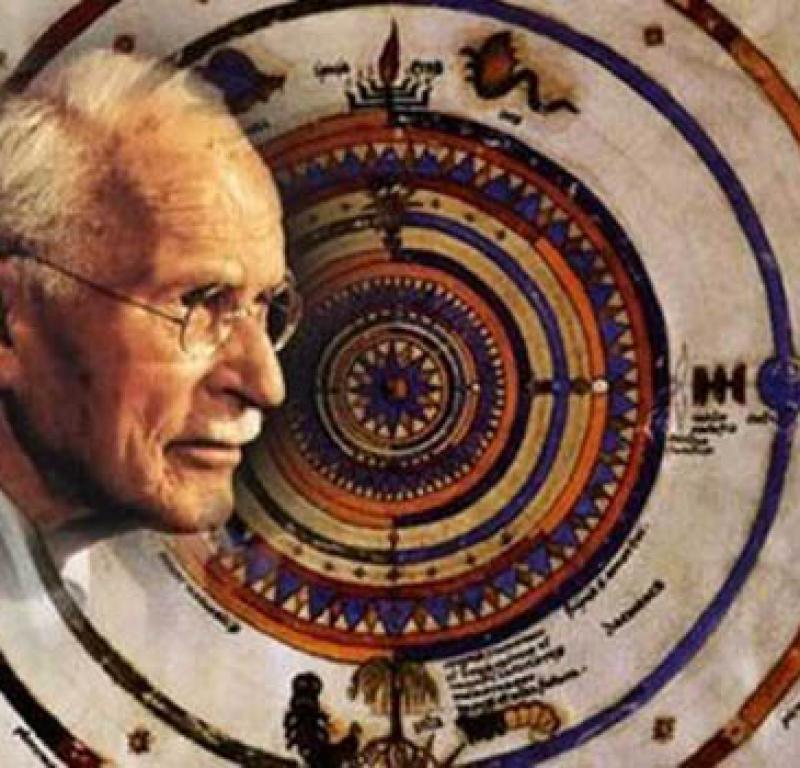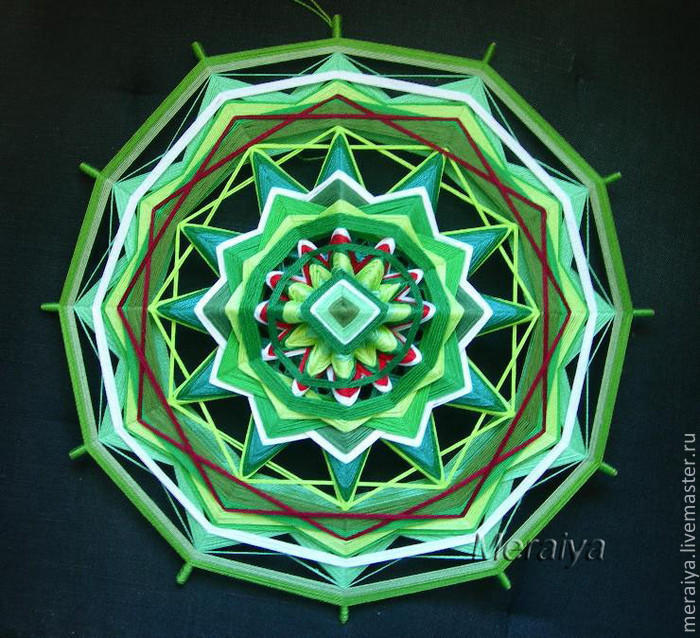I was fascinated by weaving Injun mandalas recently. Thanks to my wonderful friend Mila. We met at suspension event, when I conducted ritual for her and her boyfriend. Warm relations were established immediately & they continue to this day. In winter 2014, I came to the wonderful One Love bar at Phangan. Immediately noticed that the guys there are very creative, so when I saw the mandala in the interior, Mila agreed to teach me a few simple tricks for the novice "mandalamaker". Prolong incredible. It's not just braiding. That's meditation .
Indian Mandala.
India has a tradition - Rangoli or Alpon (picture-prayer) - drawing ornament on the exterior walls of the house - especially around the front door - and thoroughly cleared and compacted area in front of the house. Early in the morning, when men were sleeping, womens, scooping up a handful of paint (usually that's a powder) and flow narrow streams between their fingers, draw on the ground beutiful and trickly ornament. Sometimes them monochrome, but usually more than two-three colors. Tibetian monks used the same technique to create their traditional sand mandala.
Injun Mandala.
Considered, that braided Injun's mandalas is from Central and South America. It's known that Huichol tribe wove this mandalas on the territory of modern Mexico. During the colonization of America, a lot of the most valuable skills in this art have been forgotten, and now Injuns not remember about this ancient tichnique.
Injuns themselves called their product "Ojo de Dio" - " Eye of God ". Huichol tribe used the word "Sikuli" - " Power to see the hidden". Also childrens can weave a simple mandalas - their products hung at the prominent place because they believing that mandala which made by children's hands transfer God's blessing to the house.
Wise Injun Black Elk said: " All that makes World's Power is makes a circle. The sky is round, and I heard that the earth is round too, and all the stars are the same . Wind, when it's strong, like a twisted spiral. Birds make their nests round, their religion is the same as ours. The sun rises and sets in a circle. And moon the same. Even the seasons form a great circle, one after another, and always returning to his seat. Human life - it is a circle from childhood to childhood, and all the same, where Power is moving."
Technology of creating these amulets is in weaving patterns by colored thread on the basis of wooden sticks. Undoubtedly, the most difficult is not the process of weaving, the most difficult part is a deep brainwork. People learn it many years. Some Injuns puts the whole storyes in the mandalas, expressing words in colored lines and ornaments, and those who had been initiated into the tradition, could easily read the information inherent in the pattern. Today in the world just small number of people can understand that.
As well, many Injun's tribes used the mandalas in various rituals and decorative purposes. For example, Quechua Injun's herbal mandalas. These mandalas are created from plants and dedicated to the spirits of either or sent to the healing of the man. Navajo and Pueblo creating sand mandalas for "healing of the sick mind and sad heart." These mandalas are poured on a sandy plot by minced clay, ocher, sand, pollen and erased after use. Hopi also poured mosaic mandala by colored powders for various ceremonies. Anyway, images enclosed in a circle, we can met not only in Injun's culture, but in the majority of ancient civilizations.
Mandals in the psychotherapy.

Carl Gustav Jung identified mandala as the archetypal symbol of human perfection - now it's used in the psychotherapy as the way to full understanding of your own "I" itself.
Carl Jung was the first who introduced the idea of mandala to the Western researchers of dreams. In his autobiography "Memories, Dreams, Reflections" Jung tells how in 1916 he painted his first mandala, and two years later he sketched a new mandala in his notebook every day. He found that each figure reflects his inner life at the moment, and began to use these pictures to fix his "mental transformation".
"Mandala - like a drop of human blood, living cell, which can tell the condition of the health of creator." J. Kellogg
In psychotherapy the mandala is not constructed according to certain rules (as in religious practices) and created arbitrary. Image of the mandala is a projection of our psychic reality, it's reflection of the inner world in symbols. "Mandala corresponds to the microcosmic nature of the soul," wrote C.G. Jung. Psychological development, according to Jung, is not clear and linear, that's circular and consists of returning again and again to the center of the soul.
Work with the mandala is a meeting with our deep essence, getting rid of traumatic experiences, awareness of desires and needs. While working with the mandala occurs unfathomable inner work, the results of which appear in his thoughts, behavior, feelings, respect for themselves and others .
Jung believed that healing takes place due to the "growing internal integrity, awareness and disclosure of internal resources". The process of "personalization", according to Jung, is a natural process, the theme of the mandala is the movement to the center of the person, to the center of the soul, with which everything is connected, and which in itself is a source of energy.
Psychotherapy have a lot of methods to work with mandalas, but most of them is a periodicity mandala-drawing by the patient and subsequent analysis.
You can see my mandalas below.





